Mad Hedge Technology Letter
June 13, 2018
Fiat Lux
SPECIAL ACRONYM ISSUE
Featured Trade:
(FB), (AMZN), (GOOGL), (NFLX), (BABA), (BIDU), (TWTR), (SNAP), (INTC), (QCOM), (VZ), (T), (S)

Mad Hedge Technology Letter
June 13, 2018
Fiat Lux
SPECIAL ACRONYM ISSUE
Featured Trade:
(FB), (AMZN), (GOOGL), (NFLX), (BABA), (BIDU), (TWTR), (SNAP), (INTC), (QCOM), (VZ), (T), (S)

The tech industry is infatuated with acronyms.
The two-, three- and four-letter acronyms of yore have been spruced up by a new wave of contemporary terms.
There are a lot more of them now and readers will need to absorb the meaning of each term to avoid our content seeming like a Grecian dialect.
The Mad Hedge Technology Letter will break down the relevant terminology that applies to the current tech sector.
This will aid readers in their pursuit of financial satisfaction.
FANG: Facebook (FB), Amazon (AMZN), Netflix (NFLX), and Google (now Alphabet) (GOOGL)
Jim Cramer, the host of CNBC's Mad Money, coined this term as this quartet became such a force to reckon with, that they deserved their own grouping. Financial commentators and analysts often refer to the FANGs that ultimately represent the developments and destiny of large cap tech. Apple is sometimes grouped in this bundle with analysts adding a second A inside the acronym.
AWS - Amazon Web Services
The cloud arm of Amazon is its cash cow. Amazon invented this business out of thin air in 2006. It offers the ability for Amazon to operate its e-commerce division close to cost by plowing profits from its thriving cloud arm. AWS is the backbone to the whole Amazon operation. Without it, Jeff Bezos would need to rethink another genius business model because current and future success hinges on this one subsidiary. AWS is the market leader in the cloud industry, carving out 33% of the total market. Microsoft is the runner-up and saw its market share surge from 10% to 13% in the latest quarter.
GDPR - General Data Protection Regulation
Europe has been a stickler concerning individual data protection, and the American companies running riot with Europeans personal data has reached its climax. On May 25, 2018, new European regulations were implemented to give the user more control of handing out their personal data. Penalties for non-compliance are steep. Companies risk being fined up to 20 million Euros or 4% of annual worldwide turnover, whichever is larger. Facebook's Mark Zuckerberg now has a reason to behave like an angel. The least regulated industry in the world is finally experiencing the bitter regulation pill most industries have felt for centuries.
SaaS - Software as a Service
A software distribution model licensing software on a subscription basis. Instead of installing many of these software programs, many of them are available through the Internet on the cloud. Most subscriptions work on an annual basis, and this recurring revenue model has carved out additional income from companies that were used to paying a one-off fee for software. This model has been highly successful. Even former legacy companies have deployed this business model to critical acclaim.
AI - Artificial Intelligence
An area of computer science that strives to deploy human intelligence into machine simulation. The four main tasks it carries out are speech recognition, learning, planning, and problem solving. A.I. has been identified as a cutting-edge tool to fuse with technology products boosting the underlying performance creating massive profits for the participants. This phenomenon is controversial with the prophecy that robots might advance rapidly and turn on their inventors. As each day passes, A.I. is starting to infiltrate deeper into our daily lives, and humans are becoming entirely reliant on their positive functions to carry out daily tasks.
IoT - Internet of Things
Internet connectivity with things. This network will connect billions and billions of devices together. Your bathtub, thermostat, and razor will be armed with sensors and processors that reroute the performance data back to the manufacturer. Deploying the data, engineers will be able to enhance products with even more precision and high quality serving the end customer needs. 5G testing is ongoing in select American cities and new hyper-fast Internet speeds will make mass adoption of IoT products a reality.
5G - 5th generation wireless system
This is the successor to 4G and is poised to increase wireless Internet speeds up to 20 gigabits per second. Some of the traits will be low latency, high mobility, and will be able to accommodate high connection density. This technology is crucial to the development of the next generation of groundbreaking technology such as autonomous cars that need a faster Internet speed to run elaborate software. The war to develop this technology with the Chinese has turned into a heated standoff. China is stubbornly bent on becoming the global leader of technology in the future, and the communist government views 5G as the keys to the Ferrari. U.S. companies Verizon (VZ), AT&T (T) and Sprint (S) plan to roll out 5G in 2019. Other key companies are Huawei, Intel (INTC), Samsung, Nokia, Ericsson and Qualcomm (QCOM).
BAT - Baidu, Alibaba, and Tencent
This trio is the Middle Kingdom's answer to America's FANG. The nine-year domestic bull market has been led by large-cap tech, at the same time China's economy has been fueled by Baidu, Alibaba, and Tencent. Baidu and Alibaba are tradable through American depositary receipts (ADR). Tencent is public on Hong Kong's Hang Seng stock exchange, the third largest stock market in Asia. These companies are all a mix and mash of functionality that covers the same broad spectrum of the FANGs. They are the best companies in China and are on the cusp of every single cutting-edge technology from A.I. to autonomous vehicles. The Mad Hedge Technology Letter does not recommend these stocks to our subscribers because the Chinese government is on a nationalistic mission to delist Alibaba and Baidu from America and bring them back home. Initially, Alibaba wanted to list on the Hang Seng Hong Kong stock exchange, but draconian rules applied to dual-listing made the company flee to America.
NIMBY - Not In My Back Yard
Local opposition to proposed development in local areas. Although not a pure tech term, the epicenter of the NIMBY movement is smack dab in the middle of the San Francisco Bay Area where all the premium tech jobs are located. Local opposition has made it grueling for any developers to build.
What's more, the expensive cost of land has made any new building a tough proposition. This explains the 10-year drought where San Francisco experienced not a single new hotel built. The dearth of housing has caused San Francisco housing prices to skyrocket to a medium price of $1.61 million as of March 2018. Exorbitant housing prices have triggered a mass migration of Californians fleeing the Bay Area in droves. The shocking aftereffects have put highly paid Millennial tech workers spending the bulk of their salary on housing or living in dilapidated shacks. The extreme conditions we are now seeing are forcing schools around the Bay Area to close in unison as young families cannot afford to stay. Tech companies have become public enemy No. 1 in the Bay Area as locals are desperate to maintain their current lifestyle but are finding it more difficult by the day.
MAU - Monthly Active Users
Favored by social media companies to measure growth trajectories. This is how Twitter (TWTR) analyzes the health of its user numbers delivering a narrative to potential investors by hyping up user growth. If investors value this metric, this allows companies to focus on driving growth at the expense of burning cash. Thus, emerging social media companies such as Snapchat (SNAP) run huge loss-making operations for the promise of future profits after scaling.
ARPU - Average Revenue Per User
Favored by maturing social media companies, particularly Facebook, which has already grown global usership to 2.2 billion. Once the emerging hypergrowth phase comes to an end, social media companies focus on extracting more income per user through targeted ads. Facebook and Alphabet have the best ad tech divisions in all of Silicon Valley. The business model has made Facebook an inordinate amount of money as advertiser's flock to this de-facto marketplace paying more for effective ads whose price is set at an auction. It's a vicious cycle that attracts more traditional advertisers because it is the only method of selling to Millennials who are addicted to social media platforms. Cord-cutting is accelerating this trend forcing advertisers to co-exist with the Mark Zuckerberg model.
There are many more acronyms in the tech world that need explaining and that is exactly what I will do. The Mad Hedge Technology Letter will be back with another slew of technical terms to help subscribers understand the tech universe.



_________________________________________________________________________________________________
Quote of the Day
"You can worry about the competition... or you can focus on what's ahead of you and drive fast," said Square and Twitter CEO Jack Dorsey.

Global Market Comments
June 11, 2018
Fiat Lux
Featured Trade:
(LAST CHANCE TO ATTEND THE WEDNESDAY, JUNE 13, 2018, PHILADELPHIA, PA, GLOBAL STRATEGY LUNCHEON),
(THE MARKET OUTLOOK FOR THE WEEK AHEAD, or WELCOME TO THE NEW WORLD ORDER),
(AAPL), (MU), (TWTR),
(I'M HITTING THE ROAD)

It seems like another day, another analyst downgrade for technology. The latest report came from Japan's Nihon Keizai Shimbun, which reported that Apple has asked parts suppliers throughout Asia to cut back parts shipments for its iPhones by 20%. Apple shares responded by falling by $5 to $190.
Granted, the global cell phone market has been flat for the past two years. What is new is that Apple has been extracting an ever-larger share of the global smart phone profit stream, now at a heady 92%, thanks to more expensive products with better functionality. That's what I'm focusing on.
We saw a similar downgrade for the chip sector days early, which cut $9 off the high beta play there, Micron technology (MU).
The bad news was enough to trigger a long overdue rotation from perennial leaders in technology toward laggard banks, retailers, materials, and consumer discretionary.
Remember, as long as no new net cash is coming into equities beyond share buybacks, the main indexes can't break out to new all-time highs. My 10-month range for the (SPY) lives!
It is normal to hear a rising tide of wailing from Cassandras decrying impending doom as we reach the end of an economic and stock market cycle. At nine years, this one is already the second longest in history. But we have six more years to run to top the market performance from 1949 to 1961.
Personally, I believe the current technology cycle has a minimum of one to two years to go, so there is more than ample time to make money in the sector.
Much media was focused last week on the G7 Meeting in Quebec City Canada, which appears to soon become the G6, ex the United States. Here we see the unfolding of another aspect of Trump's global strategy.
He wants to break up the American led post WWII order, which made us all wealthy and abandon Europe, Japan, and Australia as allies. This is what all the new trade wars against our friends are all about.
Instead, the NEW world order has us allied with Russia, Saudi Arabia, and a handful of Gulf sheikdoms. If carried out, it should shrink U.S. GDP growth by 1% to 2% a year, caused the mother of all stock market crashes, and greatly undermine the security of the United States.
My prediction is that it won't last. The market risk is zero for the short term, but enormous for the long term. I am not alone in these predictions.
There was another new world order emerging this week, and that the addition of Twitter (TWTR) this week to the S&P 500, replacing old line chemical company Monsanto (MON). I have to confess that I totally missed the Twitter turnaround, which has rocked from $14 to $45 in a year.
Maybe meeting Twitter employees during my nightly hikes on Grizzly Peak and meeting despairing Twitter employees who went up there to commit suicide had something to do with it. This kind of experience kind of puts one off a stock for life.
As for the Mad Hedge Trade Alert Service we are having another blockbuster month. I caught the upside breakout by the lapels and shook it for all it was worth with aggressive long positions in Microsoft (MSFT), Amazon (AMZN), Salesforce (CRM), Apple (AAPL), and the Biotechnology Index (IBB).
The result was to take the performance of the Mad Hedge Trade Alert Service to yet another all-time high. Those who signed up at any time in the past 12 months have to be extremely happy.
After one trading day, my June return is +6.24%, my year-to-date return stands at a robust 26.75%, my trailing one-year returns have risen to 62.14%, and my eight-year profit sits at a 303.65% apex.
This coming week will be all about the big Fed decision on interest rates on Wednesday.
On Monday, June 11, no data of note is released.
On Tuesday, June 12, the Federal Open Market Committee Meeting begins. At 8:30 AM EST, the May Consumer Price Index is released, the most important indicator of inflation.
On Wednesday, June 13, at 7:00 AM, the MBA Mortgage Applications come out. At 2:00 PM EST, the Fed is expected to raise interest rates by 25 basis points. At 2:30 Fed Chair Jerome Powell holds a press conference.
Thursday, June 14, leads with the Weekly Jobless Claims at 8:30 AM EST, which saw a fall of 13,000 last week to 222,000. Also announced are May Retail Sales.
On Friday, June 15 at 9:15 AM EST, we get May Industrial Production. Then the Baker Hughes Rig Count is announced at 1:00 PM EST.
As for me, I will be taking off on my 2018 Mad Hedge U.S. Road Show. See you at lunch.
Good Luck and Good Trading.
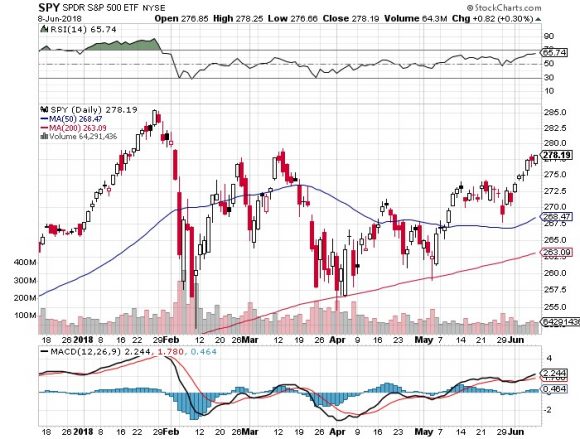
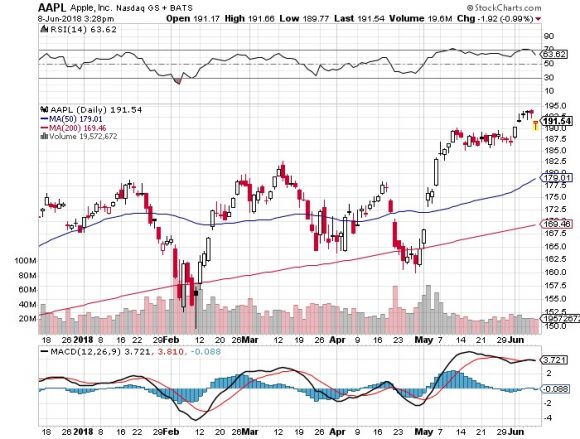
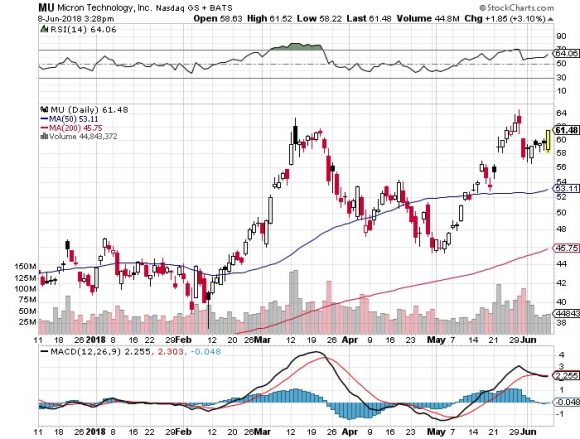
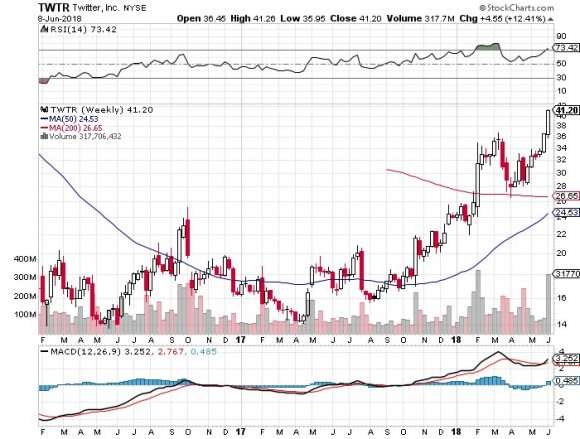

Mad Hedge Technology Letter
April 16, 2018
Fiat Lux
Featured Trade:
(THE HIGH COST OF DRIVING OUT OUR FOREIGN TECHNOLOGISTS),
(EA), (ADBE), (BABA), (BIDU), (FB), (GOOGL), (TWTR)

There is only so much juice you can squeeze from a lemon before nothing is left.
Silicon Valley has been focused mainly on squeezing the juice out of the Internet for the past 30 years with intense focus on the American consumer.
In an era of minimal regulation, companies grew at breakneck speeds right into families' living quarters and was a win-win proposition for both the user and the Internet.
The cream of the crop ideas were found briskly, and the low hanging fruit was pocketed by the venture capitalists (VCs).
That was then, and this is now.
No longer will VCs simply invest in various start-ups and 10 years later a Facebook (FB) or Alphabet (GOOGL) appears out of thin air.
That story is over. Facebook was the last one in the door.
VCs will become more selective because brilliant ideas must withstand the passage of time. Companies want to continue to be relevant in 20 or 30 years and not just disintegrate into obsolescence as did the Eastman Kodak Company, the doomed maker of silver-based film.
The San Francisco Bay Area is the mecca of technology, but recent indicators have presaged the upcoming trends that will reshape the industry.
In general, a healthy and booming local real estate sector is a net positive creating paper wealth for its people and attracting money slated for expansion.
However, it's crystal clear the net positive has flipped, and housing is now a buzzword for the maladies young people face to sustain themselves in the ultra-expensive coastal Northern California megacities. The loss of tax deductions in the recent tax bill make conditions even worse.
Monthly rental costs are deterring tech's future minions. Without the droves of talent flooding the area, it becomes harder for the industry to incrementally expand.
It also boosts the salaries of existing development/operations staffers who feed into the local housing market spiking prices because of the fear of missing out (FOMO).
After surveying HR tech heads, it's clear there aren't enough artificial intelligence (AI) programmers and coders to fill internal projects.
Compounding the housing crisis is the change of immigration policy that has frightened off many future Silicon Valley workers.
There is no surprise that millions of aspiring foreign students wish to take advantage of America's treasure of a higher education because there is nothing comparable at home.
The best and brightest foreign minds are trained in America, and a mass exodus would create an even fiercer deficit for global dev-ops talent.
These US-trained foreign tech workers are the main drivers of foreign tech start-ups. Dangling financial incentives for a chance to start an embryonic project at home is hard to pass up.
Ironically enough, there are more AI computer scientists of Chinese origin in America than there are in all of China.
There is a huge movement by the Chinese private sector to bring everyone back home as China vies to become the industry leader in AI.
Silicon Valley is on the verge of a brain drain of mythical proportions.
If America allows all these brilliant minds to fly home, not only to China but everywhere else, America is just training these workers to compete against American companies in the future.
A premier example is Baidu co-founder Robin Li who received his master's degree in computer science from the State University of New York at Buffalo in 1994.
After graduation, his first job was at Dow Jones & Company, a subsidiary of News Corps., writing code for the online version of the Wall Street Journal.
During this stint, he developed an algorithm for ranking search results that he patented, flew back to China, created the Google search engine equivalent, and named it Baidu (BIDU).
Robin Li is now one of the richest people in China with a fortune of close to $20 billion.
To show it's not just a one-hit wonder type scenario, three of the top five start-ups are currently headquartered in Beijing and not in California.
The most powerful industry in America's economy is just a transient training hub for foreign nationals before they go home to make the real cash.
More than 70% of tech employees in Silicon Valley, and more than 50% in the San Francisco Bay Area are foreign, according to the 2016 census data.
The point that really hits home is that the insane cost of housing is preventing burgeoning American talent from migrating from rural towns across America and moving to the Bay Area.
This trend was reinforced by domestic migration statistics.
Between 2007 and 2016, 5 million people moved to California, and 6 million people moved out of the state.
The biggest takeaways are that many of these new California migrants are from New York, possess graduate degrees, and command an annual salary of more than $110,000.
Conversely, Nevada, Arizona, and Texas have major inflows of migrants that mostly earn less than $50,000 per year and are less educated.
That will change in the near future.
Ultimately, if VCs think it is expensive now to operate a start-up in Silicon Valley, it will be costlier in the future.
Pouring gasoline on the flames, Northern Californian schools are starting to close down as there is a lack of students due to minimal household formation.
The biggest complaint is that there is no affordable housing.
A 1,066-square-foot property in San Jose's Willow Glen neighborhood went on sale for $800,000.
This would be considered an absolute steal at this price, but the catch is the house was badly burned two years ago. This is the price for a teardown.
When you combine the housing crisis with the price readjustment for big data, it looks as if Silicon Valley has peaked.
Yes, the FANGs will continue their gravy train but the next big thing to hit tech will not originate from California.
VCs will overwhelmingly invest in data over rental bills, and the percolation of tech ingenuity will likely pop up in either Nevada, Arizona, Texas, Utah, or yes, even Michigan.
Even though these states attract poorer migrants, the lower cost of housing is beginning to attract tech professionals who can afford more than a burnt down shack.
Washington state has become a hotbed for Bitcoin activity. Small rural counties set in the Columbia Basin such as Chelan, Douglas, and Grant used to be farmland.
The bitcoin industry moved three hours east of Seattle for one reason and one reason only - cost.
Electricity is five times cheaper there because of fluid access to plentiful hydro-electric power.
Many business decisions come down to cost, and a fractional advantage of pennies.
Once millennials desire to form families, the only choices are regions where housing costs are affordable and areas that aren't bereft of tech talent.
Cities such as Las Vegas and Reno in Nevada; Austin, Texas; Phoenix, Arizona; and Salt Lake City, Utah, will turn into hotbeds of West Coast growth engines just as Hangzhou-based Alibaba (BABA) turned that city into more than a sleepy backwater town with a big lake at its center.
The overarching theme of decentralizing is taking the world by storm. The built-up power levers in Northern California are overheated, and the decentralization process will take many years to flow into the direction of these smaller but growing cities.
Salt Lake City, known as Silicon Slopes, has been a tech magnet of late with big players such as Adobe (ADBE), Twitter (TWTR), and EA Sports (EA) opening new branches there while Reno has become a massive hotspot for data server farms. Nearby Sparks hosts Tesla's Gigafactory 1 and most likely its next addition.
The half a billion-dollars required to build a proper tech company will stretch further in Austin or Las Vegas, and most of the funds will be reserved for tech talent - not slum landlords.
The nail in the coffin will be the millions saved in taxes.
The rise of the second-tier cities is the key to staying ahead of the race for tech supremacy.
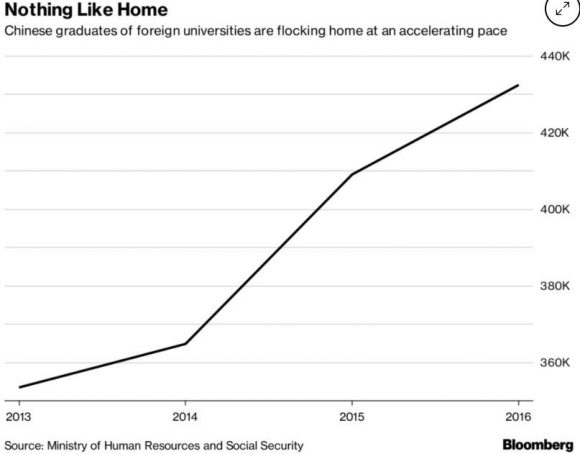
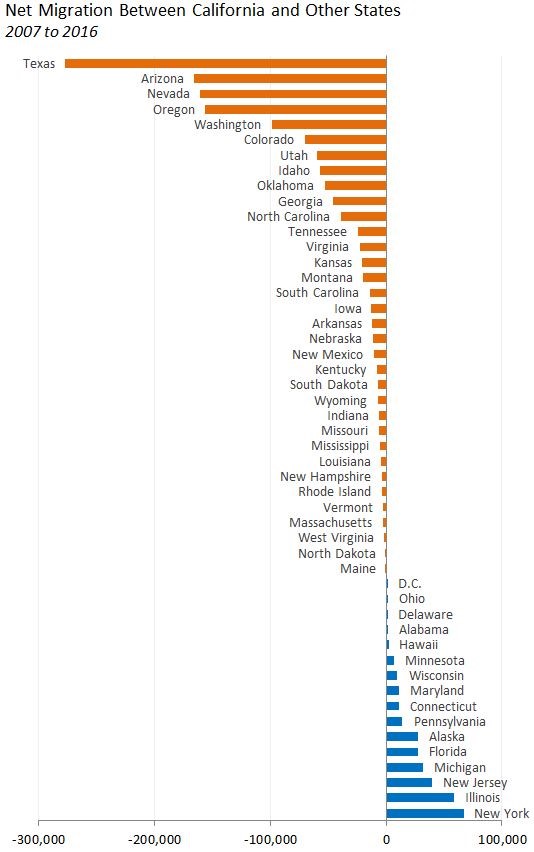

__________________________________________________________________________________________________
Quote of the Day
"Twitter is about moving words. Square is about moving money." - said CEO of Twitter, Jack Dorsey, to The New Yorker, October 2013

The San Francisco Bay area?s beleaguered renting class moaned again when the social media giant, Twitter (TWTR) finally went public a couple of years ago.
The deal immediately placed $1.82 billion into the pockets of early shareholders, almost all of whom live near the company?s San Francisco headquarters.
This is adding insult to injury to those in the region who are desperately seeking a home. San Francisco already has the most expensive rentals in the country.
The median rent for a modest two-bedroom apartment in a marginal neighborhood with poor access to public transit and no view is $4,500 a month.
Forget about it if you smoke, have a pet, or suffer from a poor credit rating. That compares to $3,150 a month in New York City, $2,300 in Boston, and $2,250 in Los Angeles.
This is just the latest tsunami of cash to hit the city?s torrid real estate market. Since 1998, Apple (AAPL) has created $700 billion in equity for shareholders, while Google (GOOG) has manufactured a further $450 billion.
In 2012 Facebook (FB) joined their ranks with a $100 billion IPO that quickly went sour. What is hoody wearing Mark Zukerberg?s creation worth today? A stunning $339 billion.
The first thing these newly enriched entrepreneurs do is buy a nice big house. This is not just limited to founding technology nerds and geeks wearing hoodies.
During the early start up days of these cash starved companies, shares are handed out to employees in lieu of better pay, all the way down to the secretary level. When they go public, thousands of millionaires are created and not a few billionaires.
Presto! A housing bubble!
Renters are getting creative in dealing with the high prices. Some are doubling up the use of bedrooms. Others rent out their beds during the day to programmers who often prefer working all night, much like hot sheet hotels of old.
Many have moved into the garage and sleep with the business they are trying to develop. Some homeowners with yards are leasing out spaces to pitch tents, while others are taking advantage of new services on the internet that allow them to rent spare rooms by the night.
There is no way of telling how far this will go. The last technology bubble popped when price earnings multiples hit 100. Most established tech firms are now trading in the 11-18 range, so the day of reckoning could be quite a ways off. Rentals could reach the astronomical levels now seen in London and Hong Kong.
In the meantime, I?m thinking of renting out my tool shed in the garden. My agent says that I could get at least $1,000 a month. The alternative is for home seekers to move to Las Vegas, where they can get a larger two bedroom without the need for heating for only $900 a month.
Do you think it is worth the commute?
?The Solar Road Revisited?. Somehow this modernized version of Bob Dylan?s epic folk album doesn?t quite ring true when couched in terms of our hyper accelerating 21st century technology. Perhaps a Millennial bard will improve on this in the future on iTunes, Pandora, and Beats, of course?
Yet, such a futuristic invention has already been created, is raising money through crowdfunding, and even landed a small Federal Highway Administration grant.
We live in an age of exploding technologies. So, when I find some that are especially interesting, offer a potential long term impact on the global economy, or present immediate investment opportunities, I am going to update you in this newsletter.
One common complaint I hear during my road shows is that we are moving into the future so fast, that it is getting increasingly hard to keep up. That is, unless you live within sight of Apple (AAPL), Google (GOOG), Twitter (TWTR), and Facebook (FB) headquarters, which I do. These companies all have venture capital arms, which fund many of these things.
Sandpoint, Idaho based engineers Julie and Scott Brusaw are the founders of Solar Roadways, a tiny engineering company that seeks to convert the American highway system from old fashioned asphalt and concrete to tempered glass and LED?s.
They have raised $2 million through the crowdsourcing website Indiegogo, which saw its amazing videos on the project go viral and attract 15 million views (https://www.indiegogo.com/projects/solar-roadways ).
Caution: conservatives may want to avert their eyes during all of the global warming, anti gasoline, and tree hugging references. But this stuff raises big bucks in California.
What can solar roads do? Obviously, the green hexagonal panels they are made of convert sunlight into electricity, heating roads so they can remain free of ice and snow all year. I could really use that up at Lake Tahoe.
Surplus power can be sold to local utilities to pay for it. Electric cars, like my Tesla Model S-1 (TSLA), can recharge their batteries just by parking on it, as my toothbrush already does in my bathroom.
You can program the LED?s to embed changeable road signs, borders, parking lots, and crosswalks. They can highlight crossing animals (200 deaths a year now in the US), or impending road obstructions.
They can even display layouts for every kind of sport (basketball, tennis, etc). The glass can be cast to give it a better grip than contemporary roads. Highway deaths would plunge, as would insurance costs.
Driving trucks on glass? The material is so strong that it can support the heaviest, or some 62 tons. My question, can handle steel caterpillar tractor treads used in road repair equipment?
Of course, it always comes down to cost with these new technologies, many of which remain pie in the sky forever. Estimates are that these roads cost 50%-300% more than existing ones. Large-scale construction would bring that down through economies of scale via mass production. The design is really quite simple.
The vision is big. It would probably cost over $1 trillion just to pave over the existing 48,000 miles of the interstate highway system. Tens of thousands of blue-collar jobs would be created. It all sounds like a massive public works project would be required, of Rooseveltian, CCC magnitude.
This just gives you a flavor of the incredibly interesting things going on here in the San Francisco Bay area, which I learn about on a daily basis. Check out the site, if only to see the future of start up funding.
You can contribute $5, or just buy a tote bag.
 Somehow, It?s Just Not the Same
Somehow, It?s Just Not the SameLegal Disclaimer
There is a very high degree of risk involved in trading. Past results are not indicative of future returns. MadHedgeFundTrader.com and all individuals affiliated with this site assume no responsibilities for your trading and investment results. The indicators, strategies, columns, articles and all other features are for educational purposes only and should not be construed as investment advice. Information for futures trading observations are obtained from sources believed to be reliable, but we do not warrant its completeness or accuracy, or warrant any results from the use of the information. Your use of the trading observations is entirely at your own risk and it is your sole responsibility to evaluate the accuracy, completeness and usefulness of the information. You must assess the risk of any trade with your broker and make your own independent decisions regarding any securities mentioned herein. Affiliates of MadHedgeFundTrader.com may have a position or effect transactions in the securities described herein (or options thereon) and/or otherwise employ trading strategies that may be consistent or inconsistent with the provided strategies.
This site uses cookies. By continuing to browse the site, you are agreeing to our use of cookies.
OKLearn moreWe may request cookies to be set on your device. We use cookies to let us know when you visit our websites, how you interact with us, to enrich your user experience, and to customize your relationship with our website.
Click on the different category headings to find out more. You can also change some of your preferences. Note that blocking some types of cookies may impact your experience on our websites and the services we are able to offer.
These cookies are strictly necessary to provide you with services available through our website and to use some of its features.
Because these cookies are strictly necessary to deliver the website, refuseing them will have impact how our site functions. You always can block or delete cookies by changing your browser settings and force blocking all cookies on this website. But this will always prompt you to accept/refuse cookies when revisiting our site.
We fully respect if you want to refuse cookies but to avoid asking you again and again kindly allow us to store a cookie for that. You are free to opt out any time or opt in for other cookies to get a better experience. If you refuse cookies we will remove all set cookies in our domain.
We provide you with a list of stored cookies on your computer in our domain so you can check what we stored. Due to security reasons we are not able to show or modify cookies from other domains. You can check these in your browser security settings.
These cookies collect information that is used either in aggregate form to help us understand how our website is being used or how effective our marketing campaigns are, or to help us customize our website and application for you in order to enhance your experience.
If you do not want that we track your visist to our site you can disable tracking in your browser here:
We also use different external services like Google Webfonts, Google Maps, and external Video providers. Since these providers may collect personal data like your IP address we allow you to block them here. Please be aware that this might heavily reduce the functionality and appearance of our site. Changes will take effect once you reload the page.
Google Webfont Settings:
Google Map Settings:
Vimeo and Youtube video embeds:
